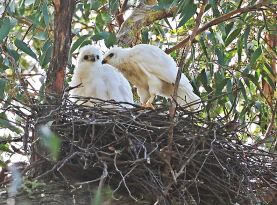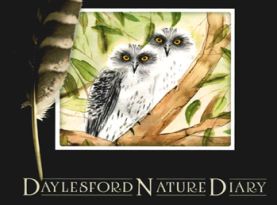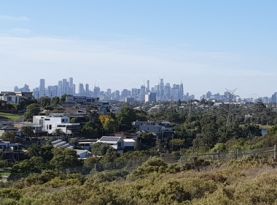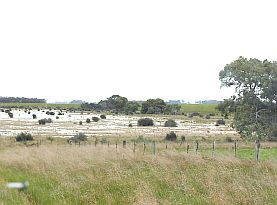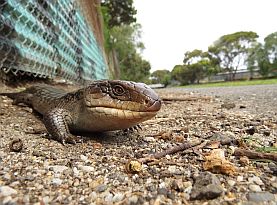SWIFFT Seminar notes 24 March 2022
Nature at home and in my landscape
SWIFFT seminar notes are a summary of the seminar and not intended to be a definitive record of presentations made and issues discussed.
This SWIFFT seminar was conducted online with 138 participants via Microsoft Teams. SWIFFT wishes to acknowledge support from the Department of Environment, Land, Water and Planning, Victoria in organising the seminar and thank speakers for their time and delivery of presentations. Also, thanks to Michelle Butler who chaired the session from Ballarat and acknowledged Traditional owners, Elder’s past and present on the lands covered by the meeting.
Key points summary
Mainstreaming nature: a monthly nature column builds connection
- For over 10 years, Tanya Loos has been able to share her love of nature with a broad audience through Nature Diaries articles in a local newspaper.
- Writing Nature Diaries has resulted in increased conversation and awareness within the local community about nature, plants and animals.
- Tanya’s writing is very much focused on looking at nature from an animal’s perspective, looking at their lives, what they feel and what they need.
Urban Greening for Health and Wellbeing
- In addition to providing habitat for flora and fauna, urban greening also helps improve the generalized wellbeing and lives of disadvantaged communities.
- Melbourne’s south-eastern suburbs tend to contain more urban greenspace nature compared to the western suburbs which generally has lower income and populations of diverse backgrounds.
- Pre and post style research evaluation was undertaken with residents within 1 km of the Upper Stoney Creek urban greening restoration site at Sunshine North to see if the project has changed the actual and perceived health and wellbeing of people.
Nature conservation in an agricultural landscape; what can we do?
- Temporary wetlands were once thought to be abundant across the Victorian Volcanic Plains but research has found there has been a sever loss of temporary wetlands due to drainage.
- The EPBC Act 1999, Listed ‘Seasonal Herbaceous Wetlands (freshwater) of the Temperate Lowland Plains’ as Critically endangered in 2012.
- In recent years farming trends have moved towards cropping, including the cropping of temporary wetlands in the western district of Victoria even though they are Listed under the EPBC Act.
- Communities need to protect temporary wetlands through Landcare, CMA’s, Local Government and education of land managers.
Living space: Fitting wildlife into our world
- Although we may tend to separate humans and nature, nature it is all around us and we need to explore ways to incorporate biodiversity conservation into our lives.
- Local extinctions often go unnoticed and undocumented but is occurring in many areas. Two thirds of wildlife have vanished from the earth since 1970.
- We can help wildlife by providing more of the resources they need to survive in our modified landscapes, e.g., planting indigenous species that can be used by wildlife for food and shelter.
List of speakers and topics
- Mainstreaming nature: a monthly nature column builds connection - Tanya Loos (Field naturalist, writer)
- Urban Greening for Health and Wellbeing - Dr. David Kelly (Vice Chancellor’s Postdoctoral Fellow, Centre for Urban Research, RMIT University)
- Nature conservation in an agricultural landscape; what can we do? - Dr. Michelle Casanova (Botanist, wetland ecologist, farmer)
- Living space: Fitting wildlife into our world - Gio Fitzpatrick (Ecological consultant, educator, naturalist)
SPEAKER SUMMARIES
Speaker summaries are adapted from presentations and are not intended to be a definitive record of presentations made and issues discussed.
Mainstreaming nature: a monthly nature column builds connection
Tanya Loos (Field naturalist, writer)
Tanya introduced her presentation by talking about some of the influences which inspired nature conservation in her life. Books such as Life on Earth by David Attenborough, My Family and other animals by Gerald Durrell and Barry Dowling’s nature column in the Age “wild life’.
Tanya acknowledged the people involved in direct action and environmental law. She found herself wanting to share her love of nature with a broad audience and began writing Nature Diaries for the local newspaper focusing on a variety of seasonal fauna and flora species as far back as 2009. Tanya’s writing is very much focused on looking at nature from an animal’s perspective, looking at their lives, what they feel and what they need. Her writing often focuses on common species so as to more readily connect with everyday people.
Over time her Nature Diaries have moved from weekly columns to monthly columns and included themes such as Living with wildlife and Living with wildlife – and solving mysteries.
Principles used in writing
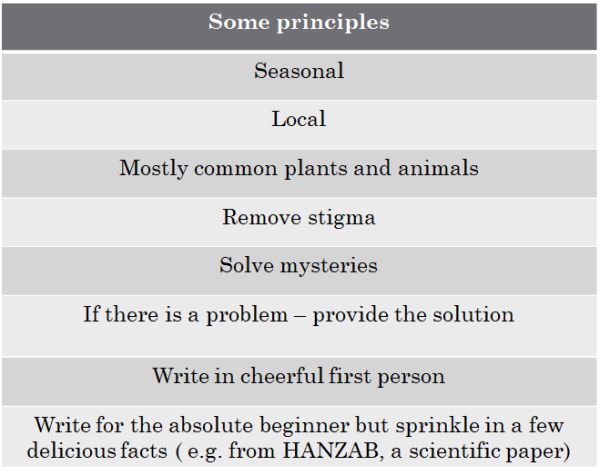
After writing Nature Diaries for over 10 years, Tanya explained she feels there has been a great deal more conversation and awareness within her community about nature, plants and animals. Her articles are read and enjoyed by people who would never attend a workshop, subscribe to a nature blog or “get involved”.
Daylesford Nature Diaries book
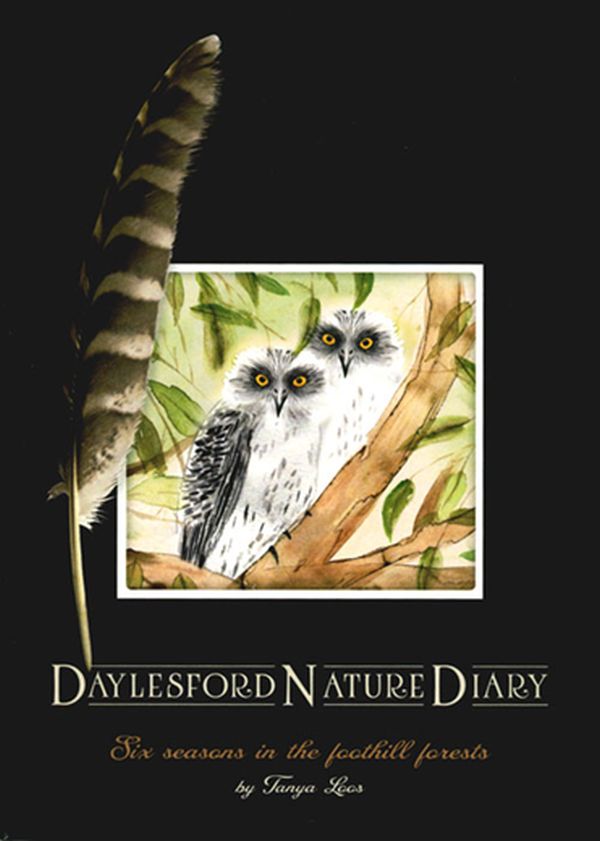
Dealing with controversial issues
Tanya discussed the way she has had to deal with issues such as climate breakdown, threats from logging, planned burning, illegal land clearing, duck shooting, animal cruelty cases and keeping council accountable.
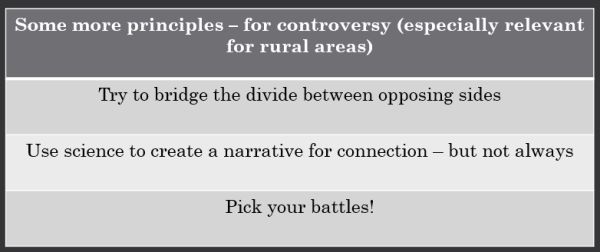
Newspaper vs online
How can we use nature writing to mainstream nature when print is disappearing?
- Printed notices at libraries, community newsletters?
- Write local books
- Use these principles for social media
Tanya felt her online writing might be reaching a different audience to that of the newspaper column. She commented that she has not received as much feedback from the online content compared to the newspaper content.
Tanya Loos web site https://tanyaloos.com/
Key points from questions
Using a descriptive style of writing with enthusiasm for nature has helped Tanya in her writing.
Tanya acknowledged the people involved in front line conservation issues which often involves challenging circumstances.
Tanya felt if people wanted to do their own nature writing for free it would be best focused on their local area and be published in the local newspaper.
Displaying notices at a local library could be a way of making people aware of your nature writing.
A comment from the chat: Five pathways to nature connection: beauty, senses, feelings, meaning and compassion.
Urban Greening for Health and Wellbeing
Dr. David Kelly (Vice Chancellor’s Postdoctoral Fellow, Centre for Urban Research, RMIT University)
David introduced his presentation by providing an overview of the project which involves research to determine if urban greening has tangible impacts on the health and wellbeing of people and also their perception of health and wellbeing. The project is located in Melbourne’s western suburbs in Sunshine North.
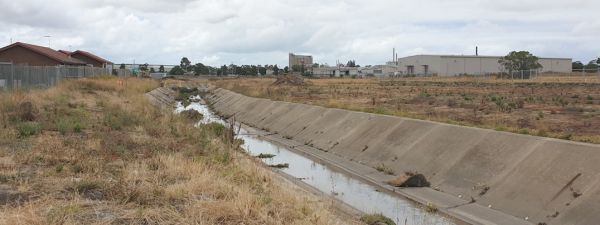
Nature is good
David spoke about research which demonstrates that having direct contact with nature we experience better health and wellbeing outcomes, better mental health, decreased levels of anxiety, rumination and negative emotions.
After contact with nature, we have increased perceptions of restoration and a sense of happiness and optimism along with decreased hospital presentation rates and instances of non-communicable disease.
Nature is uneven in its distribution
In Melbourne, the south-eastern suburbs have a higher amenity with higher concentrations of urban nature greenspace compared to the western suburbs. The distribution is not only geographic but also relates to communities with lower income and of totally diverse backgrounds. The higher income areas tend to contain more urban greenspace. Lack of access to greenspace also translates to poor social/economic indicators and public health. David noted that during Covid, areas with lower access to high amenity urban greenspace generally had higher rates of community transmission as well as higher instances of depression and anxiety related to Covid.
Urban greening policy
David spoke about the shift towards development of urban greening policy both globally and in Australia. Urban greening policy in Australia has become a prominent policy strategy. In addition to the health benefits, urban greening also contributes to mitigating the effects of climate change and increase the levels of biodiversity at local level by providing habitat for flora and fauna. Urban greening also helps improve the generalized wellbeing and lives of disadvantaged communities.
David discussed some of the literature critical of urban greening in terms of whom do the benefits of urban greening go? Increasing the public values of local areas, resulting in higher economic populations moving in and displacing lower economic populations. But the overwhelming benefits of urban greening and nature still outweigh the detrimental impacts on populations.
Research
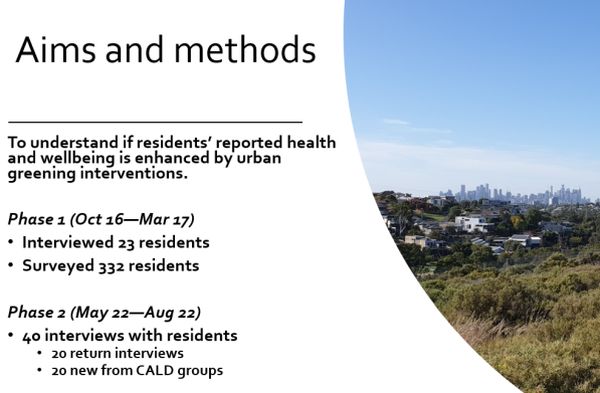
Pre and post style research evaluation was undertaken with residents within 1 km of the Upper Stoney Creek restoration site. The surveys included conversations about their ideas of nature, their emotional attachments to nature, where they access nature in the area and any factors which impact on how they interact with nature.
Study site
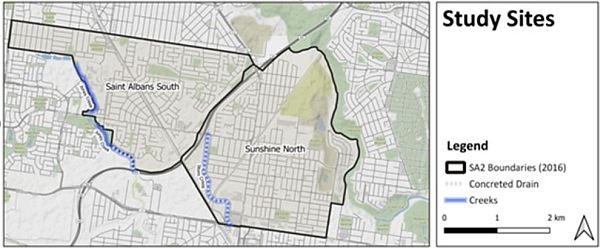
Study site population
David provided information on the local population which has high to very high levels of social disadvantage, a low median household income, low educational attainment rates, high rates where both parents were born overseas with households that don’t speak English at home. High rates of unemployment and manual labor work.
Site perceptions
David spoke about some of the common themes which emerged during the interviews with residents and how people felt about their use of the site.
Maintenance – perception that no one cares about the site, it is often overgrown with weeds and feels like an abandoned area.
Rubbish – perceived as a wasteland where rubbish is frequently dumped
Safety – thought of as an unsafe area where drug deals are conducted
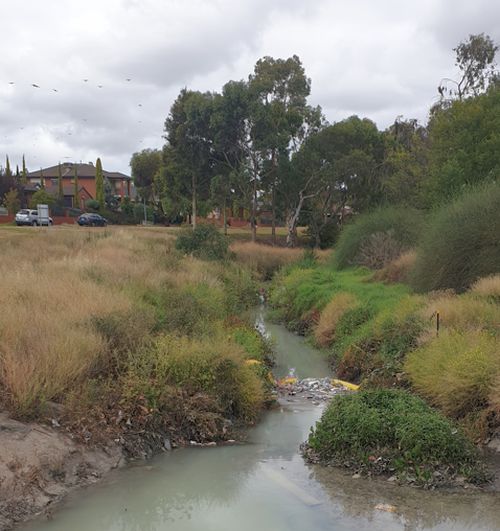
Health survey
David discussed some of the findings from resident surveys and compared the results to adjoining LGA’s; South Sunshine, Brimbank and Victoria. Whilst the level of obesity was lower with higher levels of physical activity and less time spent sitting at work there were low perceptions of their own health (less than half of the Victorian average). There was also a much higher than state average level of depression with 40% of people evaluating their own mental health as depressed. This is usually no more than 10%.
Project progress
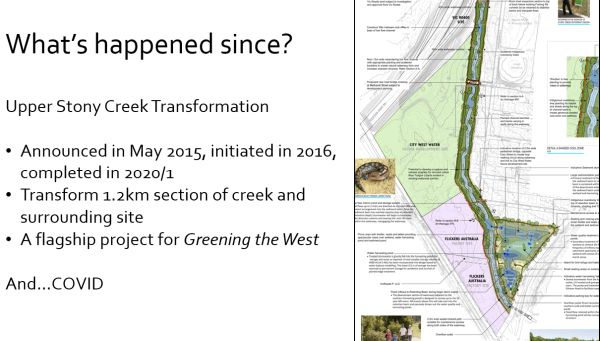
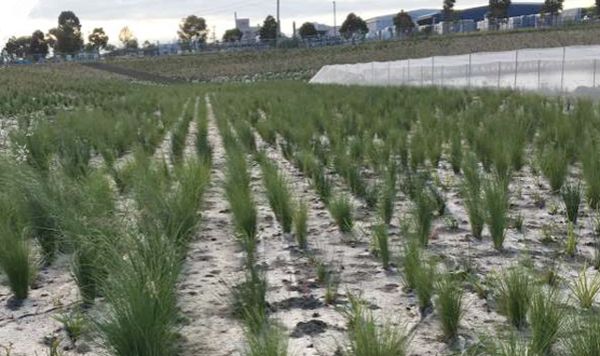
Phase 2 of the research
Further surveys of residents will be conducted to see if the partial implementation of the plan has changed people’s perceptions and use of the area.
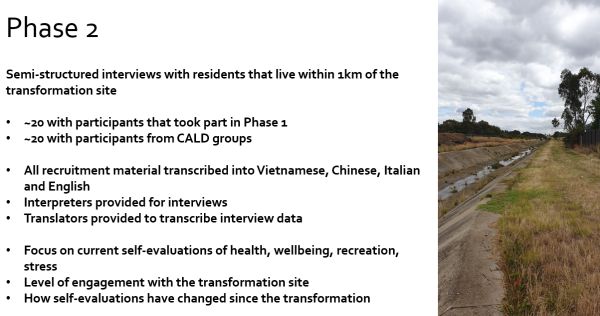
Nature is good – considerations
David spoke about issues with the distribution of nature in urban settings and the coupling of urban green projects to areas of disadvantage. What are the social justice and environmental justice issues that are not acknowledged? David identified a Critical risk: that greening projects fail to account for the health and wellbeing of populations that have lived there, addressing the lived experience of disadvantage and exposure to harmful environments.
Recommended publications
- Urban greening for health and wellbeing in low-income communities: a baseline study in Melbourne, Australia. Cities. https://doi.org/10.1016/j.cities.2021.103442
- Cities for People and Nature. https://nespurban.edu.au/wp-content/uploads/2020/11/Cities-for-People-and-Nature.pdf
- Perspectives on understanding and measuring the social, cultural and biodiversity benefits of urban greening. https://nespurban.edu.au/wp-content/uploads/2020/09/Perspectives-on-understanding-and-measuring-the-social-cultural-and-biodiversity-benefits-of-urban-greening_Sept-1.pdf
- Policy brief: Maximising the benefits of urban greening transformations. https://nespurban.edu.au/wp-content/uploads/2020/10/Maximising-the-benefits-of-urban-greening-transformations.pdf
Key points from questions
- Comment: There need to be more emphasis on planning greenspace in disadvantaged suburbs and new outer suburbs.
- Restoration of greenspace in old urban renewal projects where sites can be contaminated requires addition planning.
- More research is required to fully understand the implications of urban renewal projects on housing, displacement, wealth and rental dynamics.
- Greening the West Strategic Plan (2020 – 2025) was released in 2021 https://greeningthewest.org.au/ Sustainable development goals.
- The new round of surveys will target the Vietnamese and Chinees population in the study by including multi language material.
- Pathways to urban greening as a career are mainly through planning area in local government.
Nature conservation in an agricultural landscape; what can we do?
Dr. Michelle Casanova (Botanist, wetland ecologist, farmer)
Michelle has a background in wetland ecology and taxonomy and had specialised in temporary wetland functioning and management.
Michelle acknowledged the traditional owners of the Djab Wurrung country where her farm is located and the abundance of temporary wetlands in the landscape which contain unique remnant native vegetation.
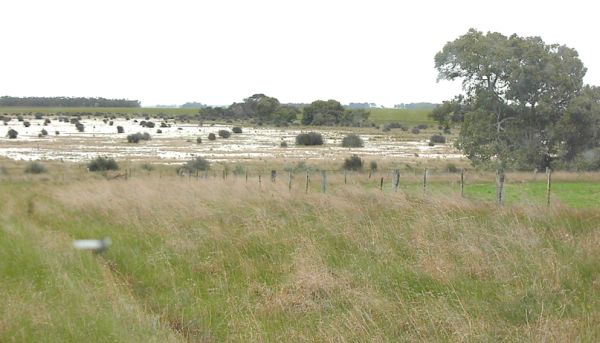
Michelle spoke about restoration of the land and the difficulties associated with changing attitudes towards wetland conservation as many of the wetlands are subject to heavy grazing and in more recent years incorporated into cropping which results in a highly degraded or total loss of wetland values.
Research
Michelle began to look at the wetlands and their native vegetation as something that required action to conserve them. She commenced research under her own initiative to find out what lives in the wetlands and their values.
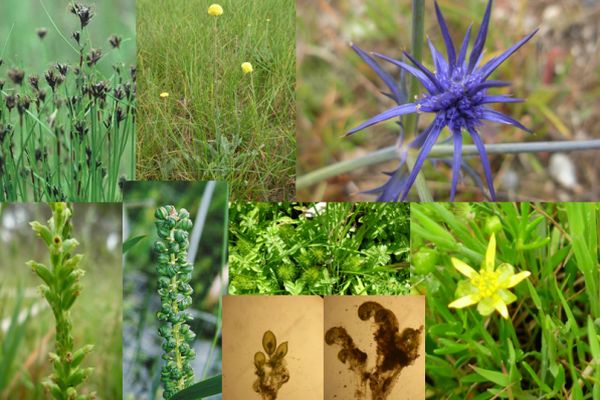
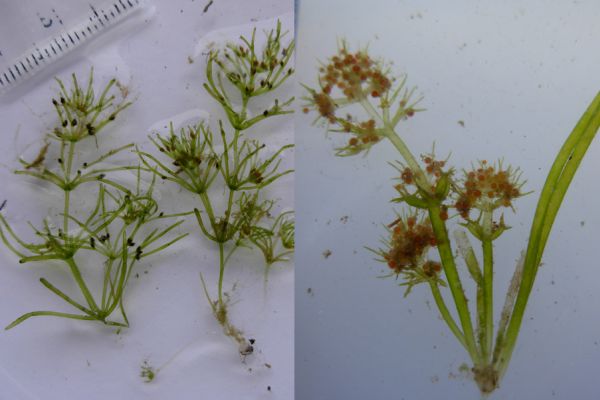
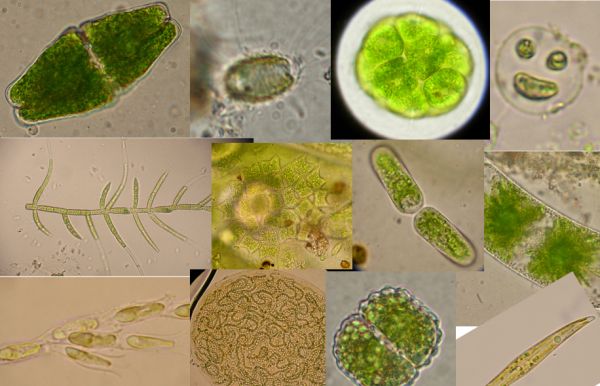
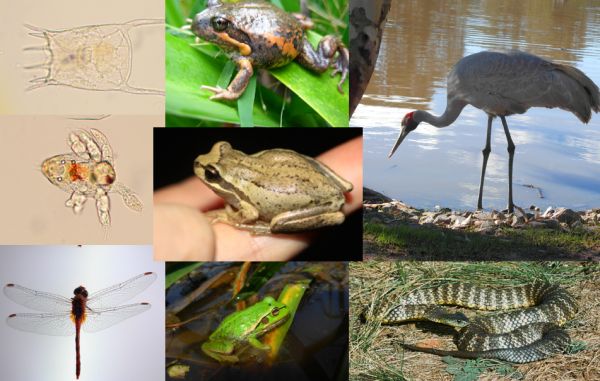
Processes that retain biodiversity
Michelle spoke about trying to understanding the resilience and function of temporary wetlands and some of the key processes that retain biodiversity, e.g., connectivity.
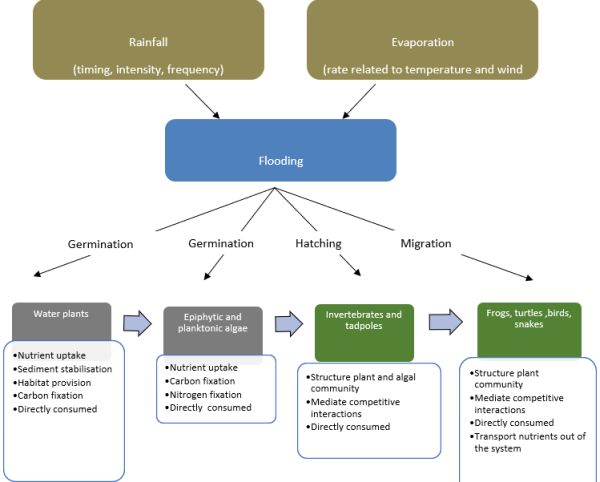
A model of the functioning of the wetlands was described in Casanova and Powling (2014), Australian Journal of Botany 62, 469–480
The model includes inputs from rainfall and evaporation, flooding which influences germination, hatching and migration across water plants, phytoplankton, invertebrates and vertebrate fauna.
Listing of herbaceous wetlands
Whilst temporary wetlands were once thought to be abundant across the Victorian Volcanic Plains, research has shown this view to be incorrect, in fact there has been a sever loss of temporary wetlands due to drainage. The work Michelle has been involved with has contributed to the EPBC Act 1999 , Listing of Seasonal Herbaceous Wetlands (freshwater) of the Temperate Lowland Plains as Critically endangered in 2012. More information.
Loss of temporary wetlands due to cropping
Michelle discussed the issue of wetland protection under the EPBC Act which unfortunately has not provided the full level of protection required, particularly as farming trends have moved towards cropping, including the cropping of temporary wetlands in the western district of Victoria. Michelle showed a series of slides which demonstrated the loss of temporary wetlands due to cropping.
Whilst cropping may produce a consistent production of barley, wheat or canola, the cropping of seasonal wetlands has a severe impact on the wetland ecology. It also fragments wetlands and can obliterate the smaller seasonal wetlands through cultivation and rock removal.
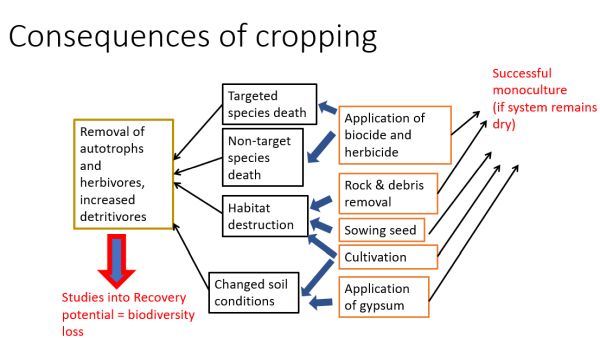
Economic drivers
Michelle discussed the economic drivers behind the decision to crop wetlands which can be influenced by climate conditions and market prices for commodities. The main decision to crop a tempoary wetland being determined by the profit to be gained. Factors such as social norms (valuing wetlands) and legality can also form part of the decision-making process.
Pathways to improve the conservation of temporary wetlands
Local Landcare group:
- Beyond Bolac Catchment Action Group
- Caring for Lake Bolac
- Tree planting
- Landcare funding
- Swamp walk and talk
Local Catchment Management Authority
- Community Advisory Group
- Board
State-level advocacy
- Scientific Advisory Committee
International advocacy
- IUCN
- International Scientific community conferences
- EU import conditions for produce
Further work
Understanding functioning and relationships
- More research into wetland ecology and their role in the landscape
Educating land managers
- Start from primary school (earlier if possible)
- Incorporate the ideas of heterogeneity and variability
- Provide options for wise use (Conservation corners; corridors; clusters)
Implement enforcement
- EPBC act
- Local councils in charge of land-use permits
Advocate for change at all levels
Heterogeneity, variability, Indigenous People’s concept of caring for country
Due to time constraints questions were dealt with in the chat
Living space: Fitting wildlife into our world
Gio Fitzpatrick (Ecological consultant, educator, naturalist)
Gio introduced his presentation by talking about how good it could be if we all opened up to the possibilities of exploring ways to incorporate biodiversity conservation into our lives. He used an example of a small area at point Ormond in the suburbs of Melbourne that was revegetated using native species which now provides a home to a variety of native birds as they migrate across the landscape. We may not see these types of areas as contributing to the living world but the birds which use the area have little choice. Although we may tend to separate humans and nature, nature it is all around us and should be considered.
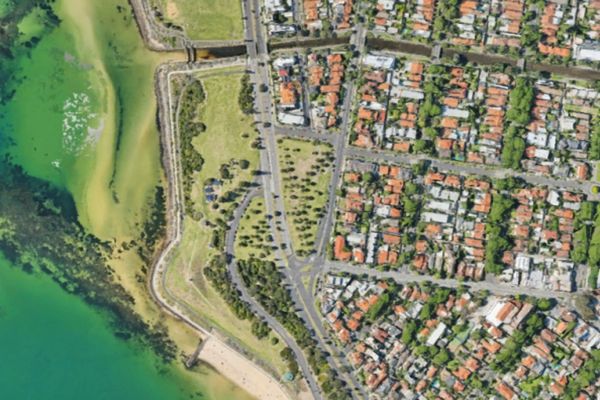
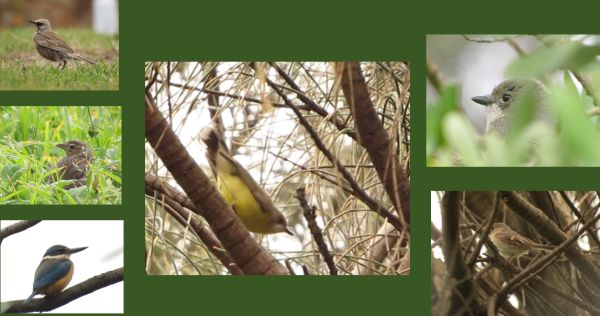
The vulnerability of remnant habitats
Gio used the example of Eynesbury Forest which is one of the most significant areas of habitat remaining in Victoria for some of the dry woodland species, e.g., Crested Shrike-tit.
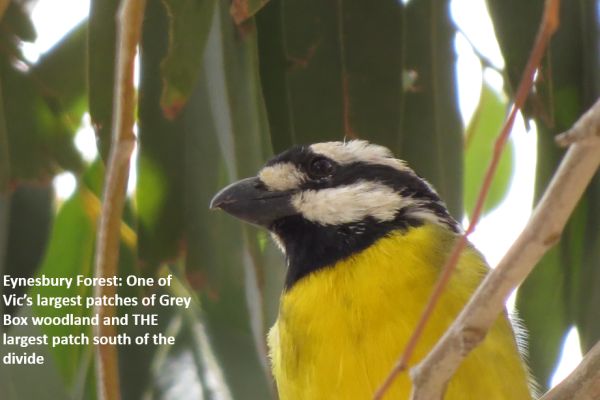
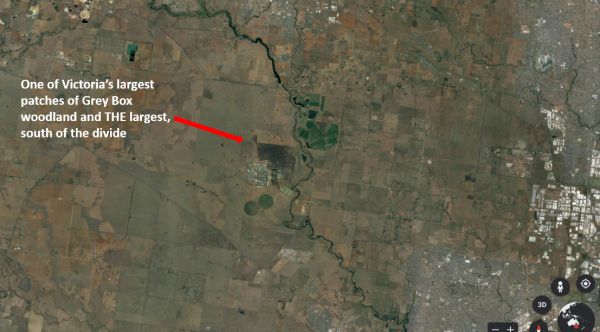
Local extinctions
Gio emphasised his concern about local extinction, which is often undocumented and happing in many areas. He pointed out that ‘Two thirds of wildlife has vanished from the earth since 1970’ (WWF Living Planet report September 2020).
Geo used an example of the Forty-spotted Pardalote (Endangered under the EPBC Act 1999). This species is only found in a small area in south-west Tasmania. The Forty-spotted Pardalote habitat comprises manna gums on lowland nutrient rich soils, much of which has been cleared for agriculture only leaving the miniscule remnants remaining, often close to urban development.
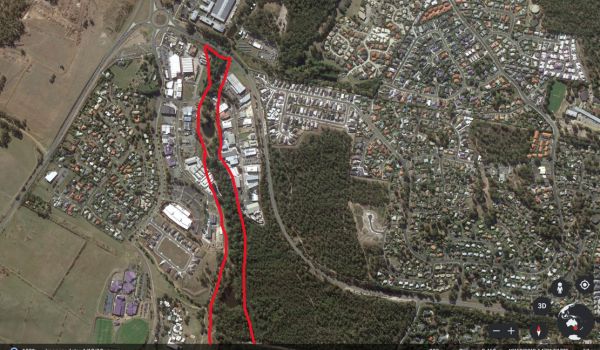
Protecting biodiversity in human dominated landscapes
Gio discussed the broad issue of biodiversity conservation and the changes which have occurred during the growth of agricultural development being targeted to the more productive landscapes and thus having the greatest impact on biodiversity. Often the reserves system is located in the poorer land systems which were not used for agriculture and do not necessarily support a high diversity of species. Gio felt that the situation we now have is that many species are confined to small patches of habitat within either agricultural or urban environments and that we must find a way to make this sustainable.
Plant indigenous species
Gio explained that wildlife doesn’t see the dichotomy between natural and unnatural like we do but rather what is liveable or not, does it have the resources to survive? We can help wildlife by providing more of the resources they need to survive in our modified landscapes, e.g., planting indigenous species that can be used by wildlife for food and shelter. Gio pointed out that even though people have been planting native species in backyards for decades it has not produced the benefits that it should have. The main reasons being; 1. the native status being based on national boundaries rather than ecological boundaries, 2. perceived habitat-value being based largely on nectar production – nectar is only a small part of the overall ecological role of plants but has been given more prominence rather than considering the more holistic ecological role of indigenous plants.
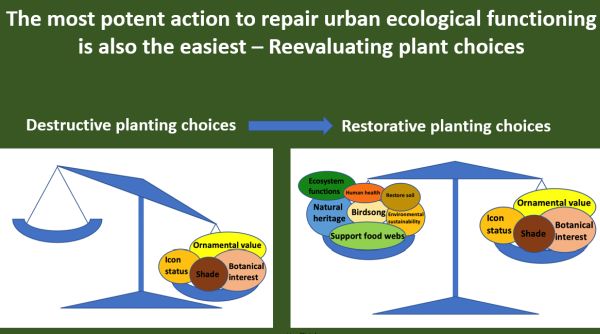
Gio pointed out that insects are a major component of the ecosystem which have declined due to native vegetation being replaced by introduced vegetation. Loss of insects can have a direct impact on birds. Research from North America found more than 3 billion individual birds have disappeared from North America over the last 50 years. The greatest decline in bird numbers being those that feed on insects. Ornithological Applications, Volume 123, Issue 1, 1 February 2021
Black Wattle – a beacon for wildlife
Gio discussed the value of a single black wattle in a sea of urban housing in the south-eastern suburbs of Melbourne. The tree provides a valuable food source for many birds transiting through the area, not only for its nectar but also the insects which live on the tree and grubs in the tree.
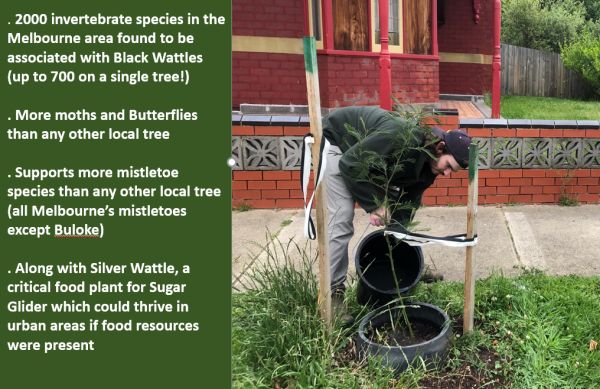
In a world where so much of the natural landscape has been destroyed, we all have to be part restorationists and part conservationists. Being passionate about restoring nature as much as about preventing its destruction.
Even the little things like what tree to plant, what lawn grass to choose, what colour street light to install can all add up.
Key points from questions
The Black Wattle can live for about 20 years, so in cases where there is a hesitancy about using them for street trees Gio recommends using the Silver Wattle which lives for about 80 years.
Chat comments included; many urban plantings are designed with a 20 year cycle.
Due to time constrains the time for questions was limited and dealt with in the chat.
Notes from previous SWIFFT Seminars


